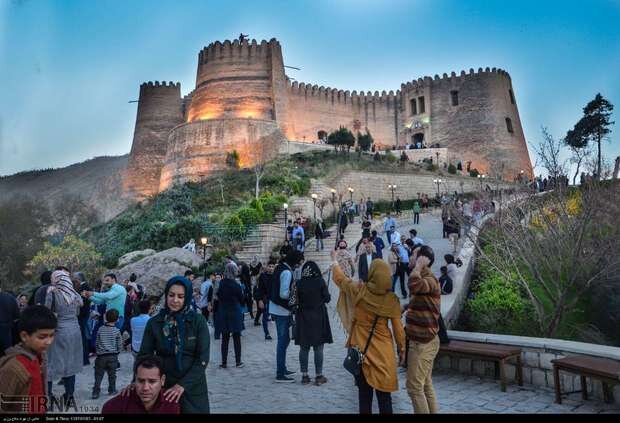Iran submits Khorramabad’s Valley and Falak-ol-Aflak Fortress for UNESCO recognition

TEHRAN – Iran has submitted a dossier on “Khorramabad's Valley and Falak-ol-Aflak Fortress” to the United Nations Educational, Scientific and Cultural Organization for a possible registration as a World Heritage.
On Wednesday, Ali Darabi, the deputy minister of cultural heritage, sealed the dossier and forwarded it to the UN cultural body after careful consideration, ILNA reported.
Darabi emphasized the profound historical depth encapsulated in the dossier, highlighting that Khorramabad, with its 54,000 years of history, provides tangible evidence of life and civilization within the caves of this region.
It marks a crucial step in the international recognition and protection of the cultural and historical significance of Khorramabad's Valley and the iconic Falak-ol-Aflak Fortress.
Elsewhere in his remarks, the official expressed gratitude for the [Iranian] President's dedicated efforts in addressing the challenges associated with the dossier's nomination.
He also acknowledged the continuous support from Ezatollah Zarghami, the Minister of Cultural Heritage, Handicrafts, and Tourism, expressing hope that the submission would lead to the eventual UNESCO World Heritage designation.
The unmissable eight-towered fortress dominates Khorramabad as one of the most visited travel destinations in the region for both domestic and foreign sightseers. The fortress seems particularly imposing and dramatic when floodlit at night, offering picturesque views of its encircling crenelated battlements.
Some experts believe that Falak-ol-Aflak is comparable with similar works in Naqsh-e Rostam, Naqsh-e Rajab, Tape Chugan, and Firuzabad in Fars province. In 2018, the UN cultural body added an ensemble of Sassanian historical cities in southern Iran -- titled “Sassanid Archaeological Landscape of Fars Region”-- to its World Heritage list. The ensemble comprises eight archaeological sites situated in three geographical parts of Firuzabad, Bishapur, and Sarvestan. It reflects the optimized utilization of natural topography and bears witness to the influence of Achaemenid and Parthian cultural traditions and Roman art, which later had a significant impact on the architecture and artistic styles of the Islamic era.
The Sassanid era is of very high importance in the history of Iran. Under the Sassanids, Persian art and architecture experienced a general renaissance. Architecture often took grandiose proportions, such as the palaces at Ctesiphon, Firuzabad, and Sarvestan, which are amongst the highlights of the ensemble. Crafts such as metalwork and gem engraving grew highly sophisticated, yet scholarship was encouraged by the state. In those years, works from both the East and West were translated into Pahlavi, the language of the Sassanians.
AM
